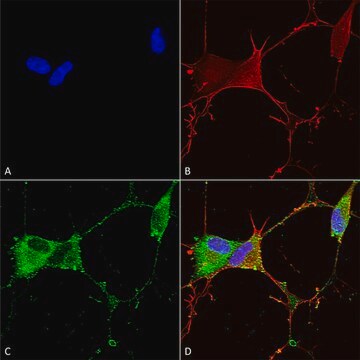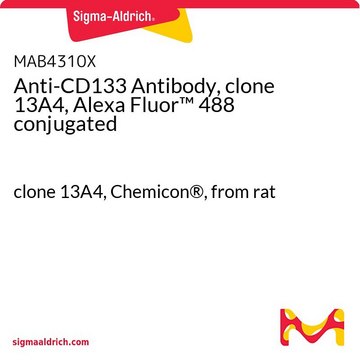MABF175E
Przeciwciało anty-CD3 (ludzkie), 10819 710, klon UCHT1
clone UCHT1, from mouse, redFluor® 710
Synonim(y):
T-cell surface glycoprotein CD3 epsilon chain, T-cell surface antigen T3/Leu-4 epsilon chain, CD antigen CD3e, CD3
About This Item
Polecane produkty
pochodzenie biologiczne
mouse
Poziom jakości
białko sprzężone
redFluor® 710
forma przeciwciała
purified antibody
rodzaj przeciwciała
primary antibodies
klon
UCHT1, monoclonal
reaktywność gatunkowa
human
metody
flow cytometry: suitable
numer dostępu UniProt
docelowa modyfikacja potranslacyjna
unmodified
informacje o genach
human ... CD3E(916)
Opis ogólny
Immunogen
Zastosowanie
Inflammation & Immunology
Immunoglobulins & Immunology
Jakość
Flow Cytometry Analysis: 0.5 μg from a representative lot detected CD3 in one million human peripheral blood lymphocytes.
Postać fizyczna
Przechowywanie i stabilność
Uwaga: Zaleca się przechowywanie nierozcieńczonego produktu w temperaturze 2-8°C i chronienie go przed długotrwałym działaniem światła. Nie zamrażać.
Inne uwagi
Informacje prawne
Oświadczenie o zrzeczeniu się odpowiedzialności
Nie możesz znaleźć właściwego produktu?
Wypróbuj nasz Narzędzie selektora produktów.
Kod klasy składowania
12 - Non Combustible Liquids
Klasa zagrożenia wodnego (WGK)
nwg
Temperatura zapłonu (°F)
Not applicable
Temperatura zapłonu (°C)
Not applicable
Certyfikaty analizy (CoA)
Poszukaj Certyfikaty analizy (CoA), wpisując numer partii/serii produktów. Numery serii i partii można znaleźć na etykiecie produktu po słowach „seria” lub „partia”.
Masz już ten produkt?
Dokumenty związane z niedawno zakupionymi produktami zostały zamieszczone w Bibliotece dokumentów.
Nasz zespół naukowców ma doświadczenie we wszystkich obszarach badań, w tym w naukach przyrodniczych, materiałoznawstwie, syntezie chemicznej, chromatografii, analityce i wielu innych dziedzinach.
Skontaktuj się z zespołem ds. pomocy technicznej







